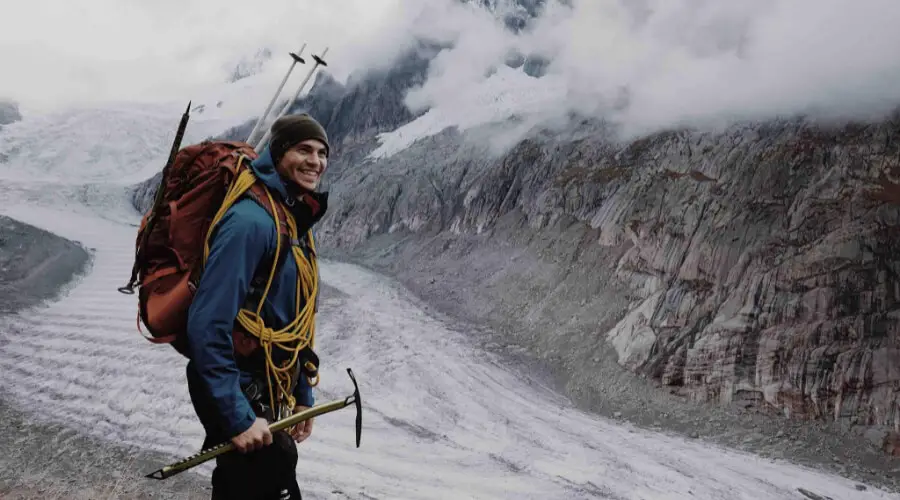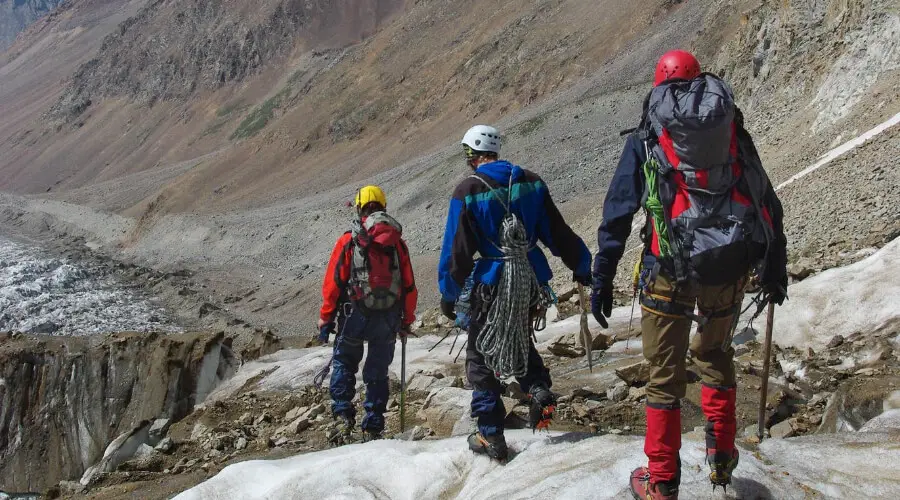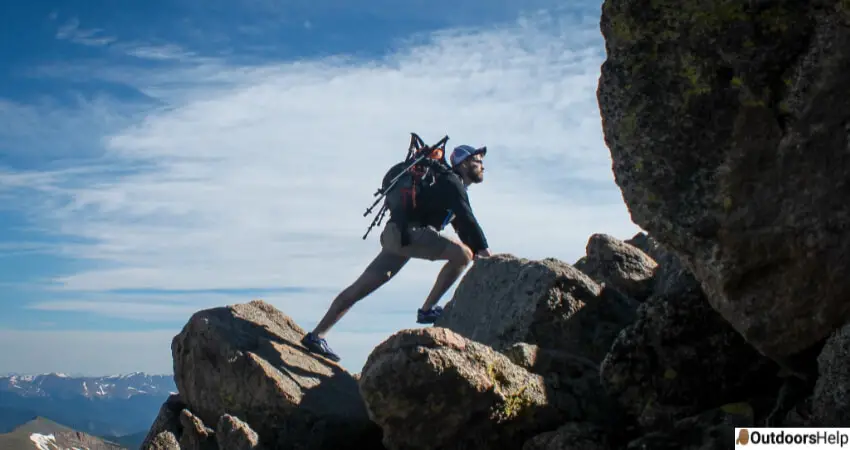Technical hiking is a term widely used when referring to a combination of rock climbing and walking on a mountain. For a hike to be considered technical, you must climb mountains or scale rocks using ropes and technical hiking equipment. Taking part in technical hiking is a challenging exercise that calls for technical hiking skills and a high fitness level. Though veteran hikers can handle challenges posed by hard trials on their own, it is advisable to seek the services of a certified guide. A trail is considered technical or difficult when it involves long rocky sections with uneven surfaces. The typical width of the trail should be at least 1.5 feet, and the extended surface should feature a slope of 6 inches or less. However, an extremely difficult level of technical hiking has a width of one foot and a slope of six inches and above.
What Are The Examples Of Difficult Hiking Paths?

Numerous difficult paths require technical hiking. First, it is vital to know that hiking is divided into levels. Levels 1-2 are considered easy hiking trails, while levels 3-5 are difficult levels requiring technical skills to hike. Examples of difficult hiking trails in level 4 include; Caballero Canyon, Santa Rosa trail, and Sage trail. Level five trails are Little Pine Single and part of Bell Canyon.
Comparison Table Of Hiking Levels
| levels | Definition | Surface | Width In Feet | Obstacles |
| 1 | Smooth and wide trail | A dirt surface with rocks and roots | No less than 4 | A slope of 4” or less |
| 2 | Smooth with variable width | A dirt surface with rocks, ruts, and roots | 1.5 feet wide | A slope of 4” or less |
| May also feature loose rocks | At least 4 feet wide | A slope of 6” or less | ||
| 3 | Uneven and rocky terrains | Dirt uneven surface with rocks, roots, and ruts | 1.5 feet wide | A slope of 4” or less |
| 4 | Long segments featuring uneven and rocky surfaces | Continuous uneven surface caused by rocks, ruts, and roots | 1.5 feet wide | A slope of 6” or less |
| 5 | Extensive sections featuring rocky and uneven terrains | Continuous uneven surface caused by rocks, ruts, and roots | 1 foot wide | A slope of more than 6.” |
Note that besides the features illustrated in the above table, trails are considered difficult if they have the following characteristics;
1. Narrow width.
2. Rocky surfaces.
3. Non-firm trails
4. Loose rocks that are displaced when walking on them
5. An overgrown path.
6. Slopes that cut across the trail (also called camber).
7. Long drops at the trail end.
8. Steep trails
Basics Of Technical Hiking

Suppose you are used to easy hiking, and you plan to venture into the more challenging trails that require hiking skills and endurance, first, you need to prepare yourself psychologically for the grueling challenges the exercise will throw into your face. Your physical fitness should be tip-top and be ready to hike alongside a mentor, an expert, or a guide who is familiar with the terrain. Mountain or trail guides are vital since they know the weather pattern of the locality and dangers posed by a particular terrain.
Graduating from typical to technical hiking requires the following;
1. Grow Your Skills
It is impossible to leap from typical to technical hiking. If you desire to master the skills involved in hard trials, try making a slow and steady progression. Otherwise, as the adage goes, “Rome was not built in one day.”
The first step is trying to tackle level 1 routes that are a bit challenging. The routes will prepare you for the rugged terrains and different weather patterns you will encounter on hard hiking levels.
Learning and acquitting yourself to exposure is a vital skill for scaling hard hiking terrains. Most people stiffen when exposed to steep slopes; hence their breathing becomes short. If you desire to dispel the fear, look ahead and focus on something else apart from the scaring drop-off.
While honing the hiking skills, don’t feel embarrassed; seek out and hire a professional guide who will take you through the basics of technical hiking.
2. Know The Scale
Hiking trails come with a difficulty rating system. After conquering level 1 and 2 trails that are exceptionally maintained and pose no great challenges, you are now ready to venture into level 3 trails that are rugged and punishing.
Your adventure demands technical skills. You will no longer be walking on comfortable paths, but you will encounter boulders and rocks which will force you to scramble. Advancing to level 4 is even more demanding. The level 4 scale is like a transition from hiking to mountaineering. Here you require rope skills learned from a qualified instructor. Level 5 trails venture straight-up, and they are the most challenging. To endure the punishment of technical hiking, you must be physically and mentally sound.
3. Acquire The Right Gear
Venturing into technical hiking requires preparedness. Gather all necessary gear that will keep you safe and protected. It is advisable to go hiking equipped with all-weather clothes irrespective of the prevailing weather conditions. Weathers are unpredictable, so go with either wool or synthetic layers and mid-layers when tackling your technical hikes. A windbreaker and a rain jacket are a must regardless of the weather.
Well-cushioned footwear with optimal traction is another hiking gear that is a must-have. An ideal shoe for hiking should be lightweight. Ensure the shoe accompanying you inspires confidence when traversing a boulder field encountered on the trail.
The other gear to consider is quick-drying and breathable pants, an appropriate backpack, first aid kits, and gloves.
4. Fitness Level
It is important to determine your fitness shape. If your fitness level is not tip-top, consider less strenuous hikes. Meanwhile, you can work towards improving your fitness, attempting a technical hike while non-fit will work against your body. Don’t punish your body unnecessarily. Otherwise, hikes are meant to be enjoyed but not to torment.
You need extensive training to ensure your body will not embarrass you as you embark on technical hiking. The training should aim to build endurance, strengthen the muscles, and improve your balance.
Conclusion
Technical training is not for the faint-hearted. Unlike typical hiking, which requires no skills, here you must master skills such as rope using. You also must train your body to endure the rigorous activities involved on the difficult trail.

